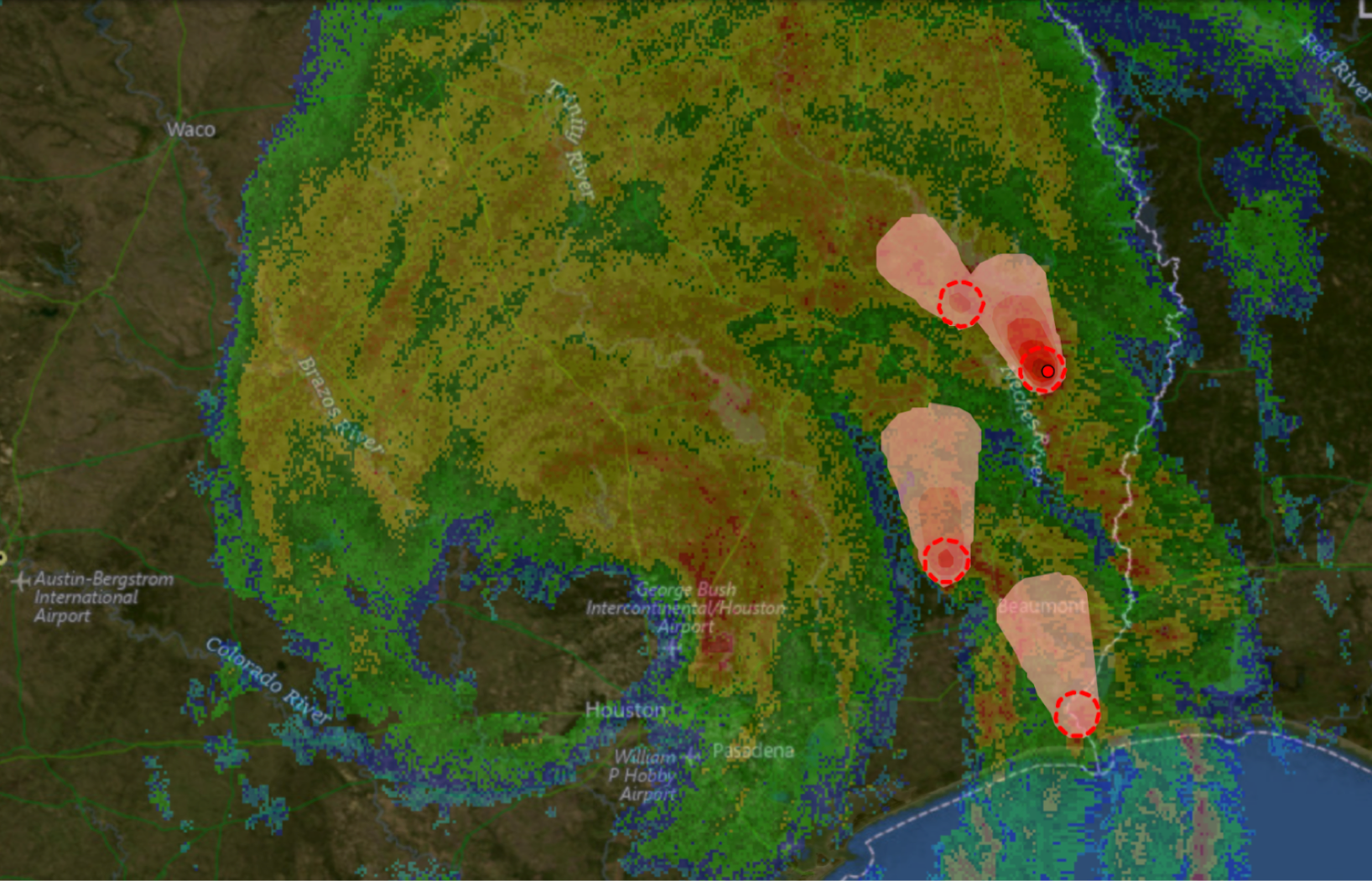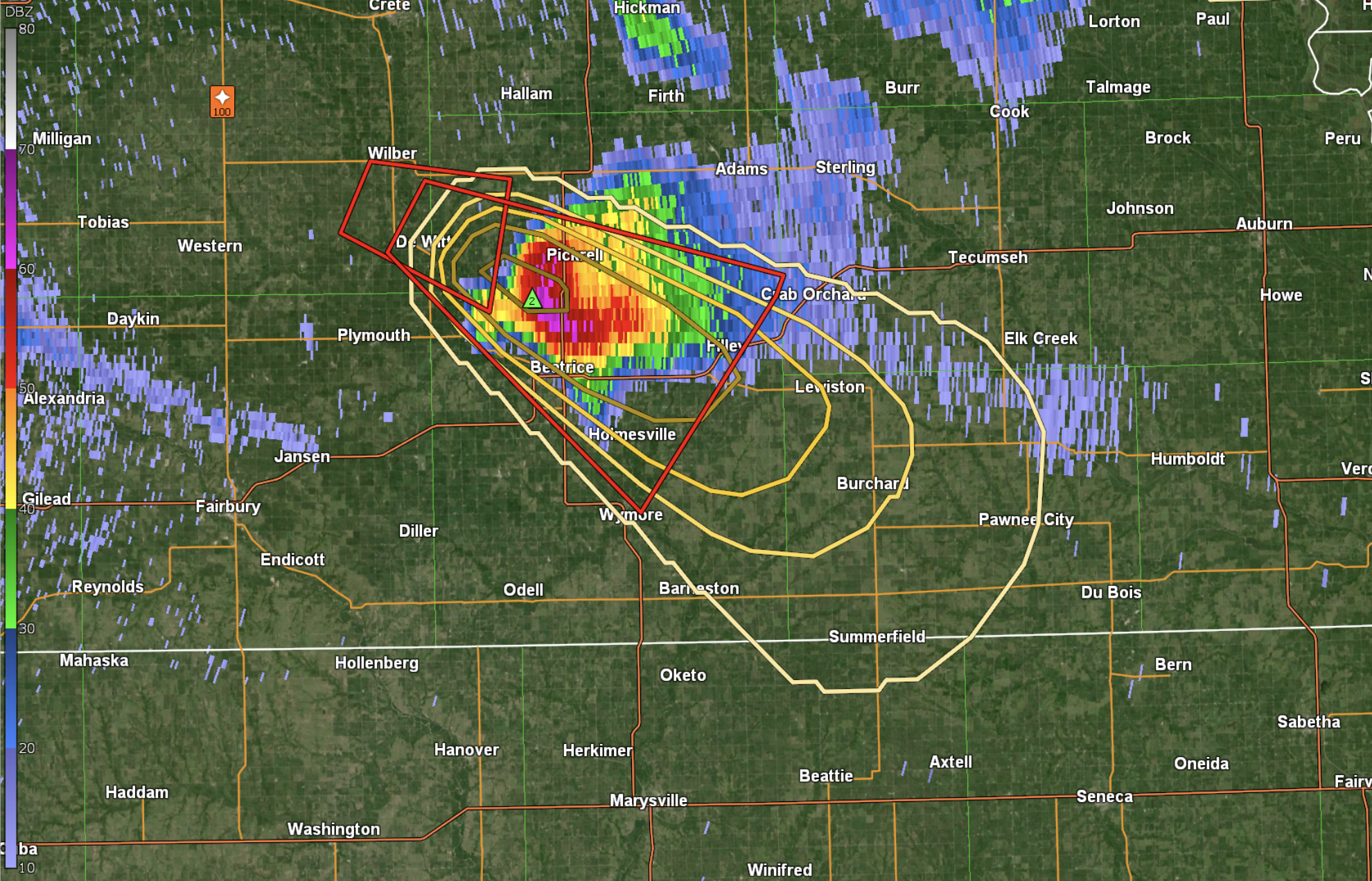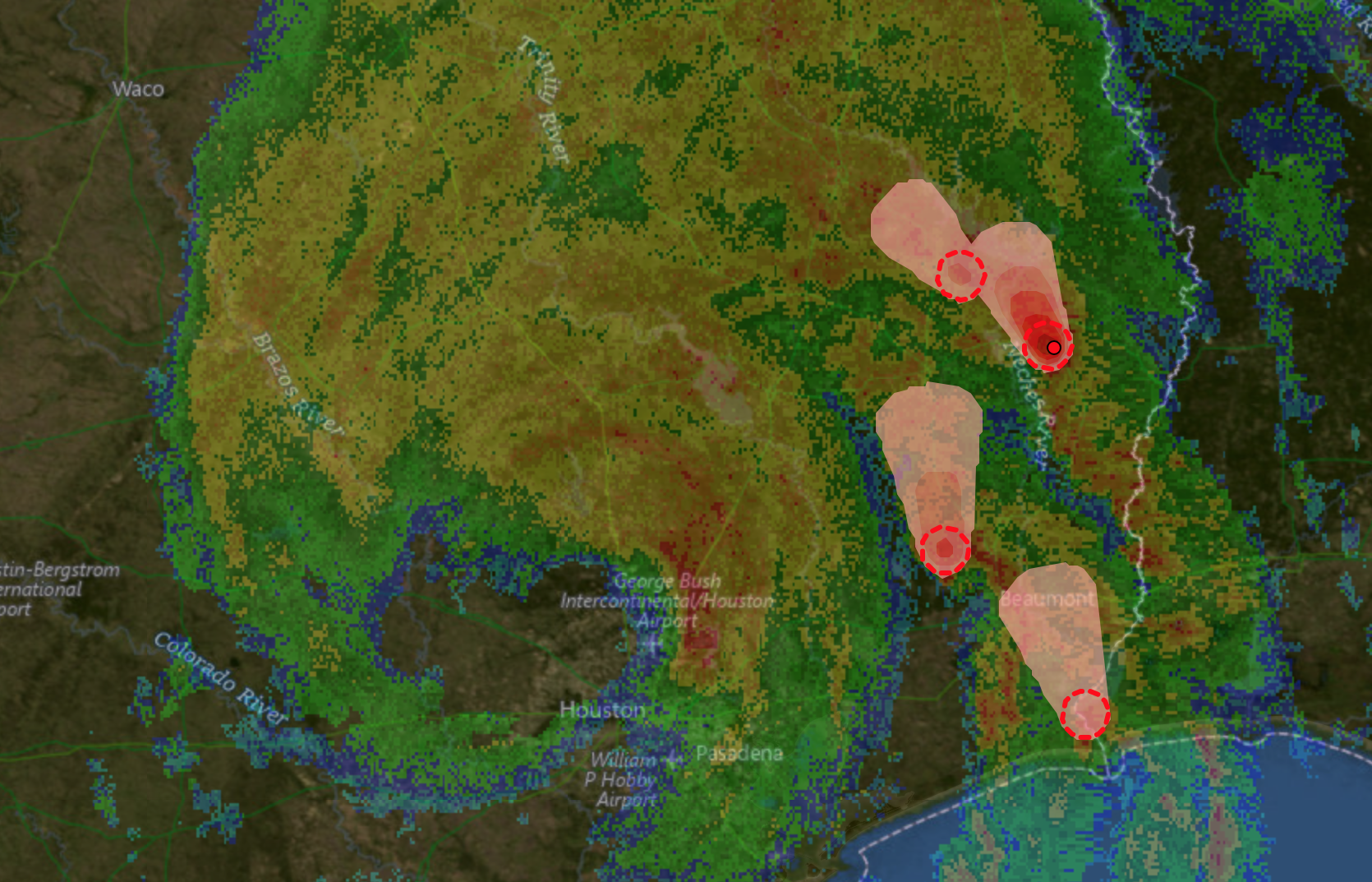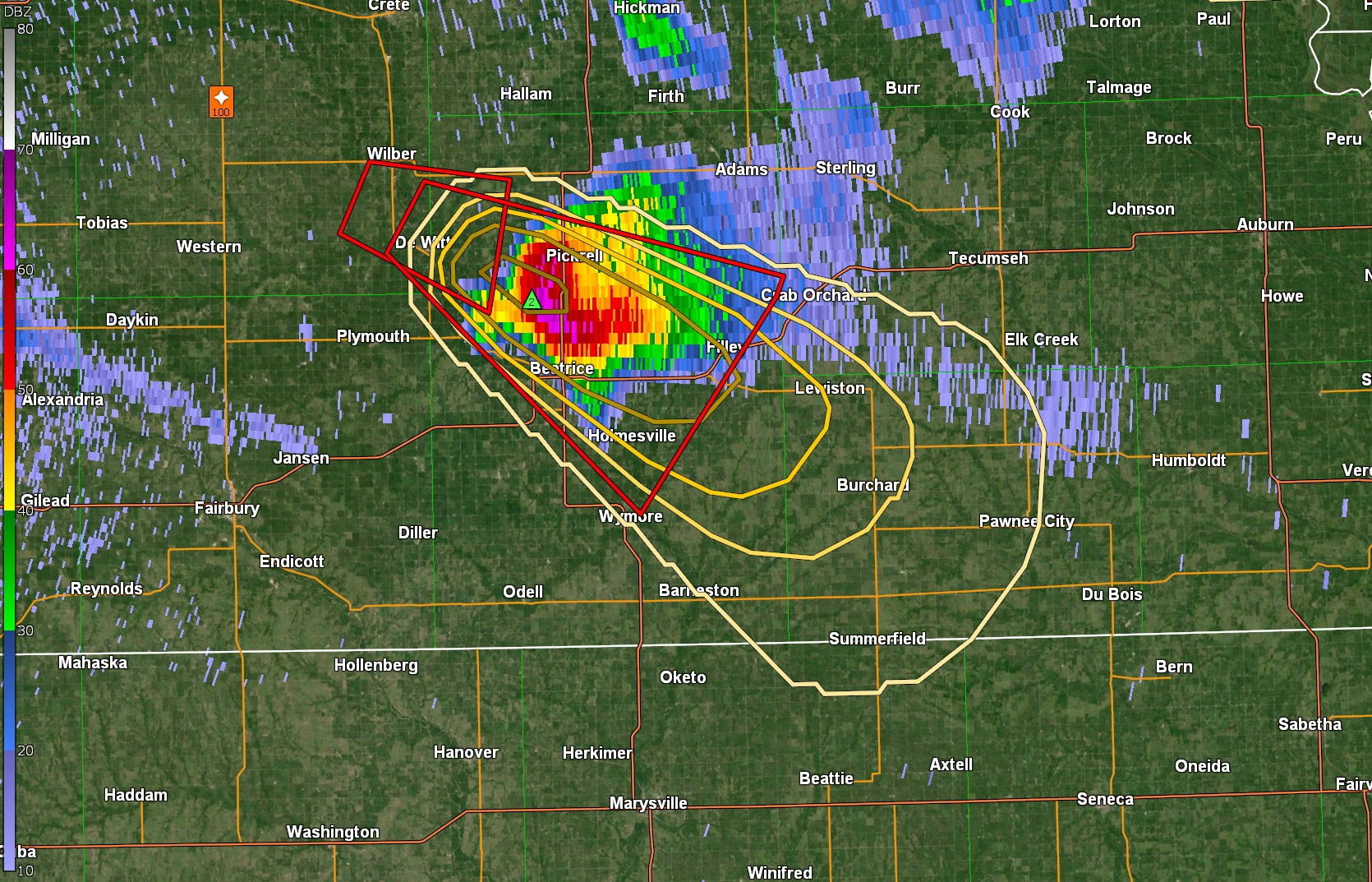
What is PHI?
Probabilistic Hazard Information (PHI) is a storm-based product that conveys motion, timing, and likelihood of severe weather hazards (tornadoes, wind, hail, and lightning). PHI is derived from machine learning algorithms, such as TORP, ProbSevere, and ProbLightning and is updated every two minutes to rapidly detect and depict changes in storm evolution.
When PHI is paired with warnings from National Weather Service forecasters, PHI has the ability to provide additional lead time ahead of the warnings. PHI can also be used to provide guidance before the weather turns severe.


How Can I View PHI?
PHI is an experimental data product that is currently being evaluated by the National Weather Service (NWS) to enhance its accuracy, and currently has limited availability. To evaluate this data, NOAA forecasters and researchers can load placefiles of PHI into Gibson-Ridge 2 Analyst (GR2) and view the data in real time.
If you are involved in the evaluation and development of this data, click this link to be directed to the real-time flow of data and view the current domain coverage. If you are a NOAA researcher or NWS forecaster and would like to be involved with this evaluation, please fill out this form to request access to the data.
The Future of PHI
NSSL strives to "improve the lead time and accuracy of severe weather warnings" (NSSL). See how PHI and the proposed paradigm of FACETs support this mission by watching this video or visiting NSSL's website about FACETs.
The NWS has outlined its strategic plan for 2023-2033 and its supporting roadmaps, one of which is the Probabilistic Impact-based Decision Support Services (Prob-IDSS) Roadmap. PHI aligns with several of the goals and key objectives in the NWS Prob-IDSS Roadmap.



